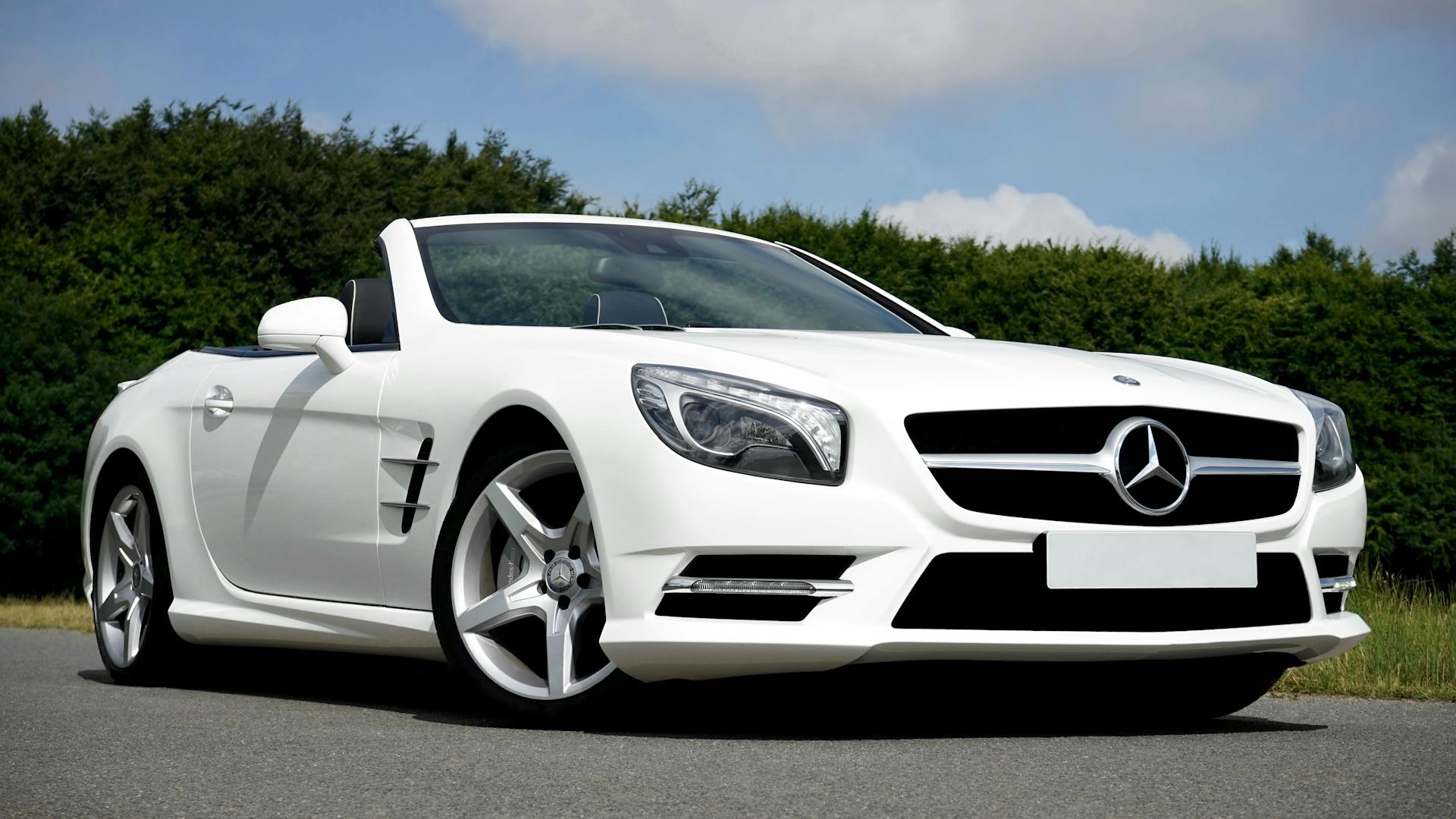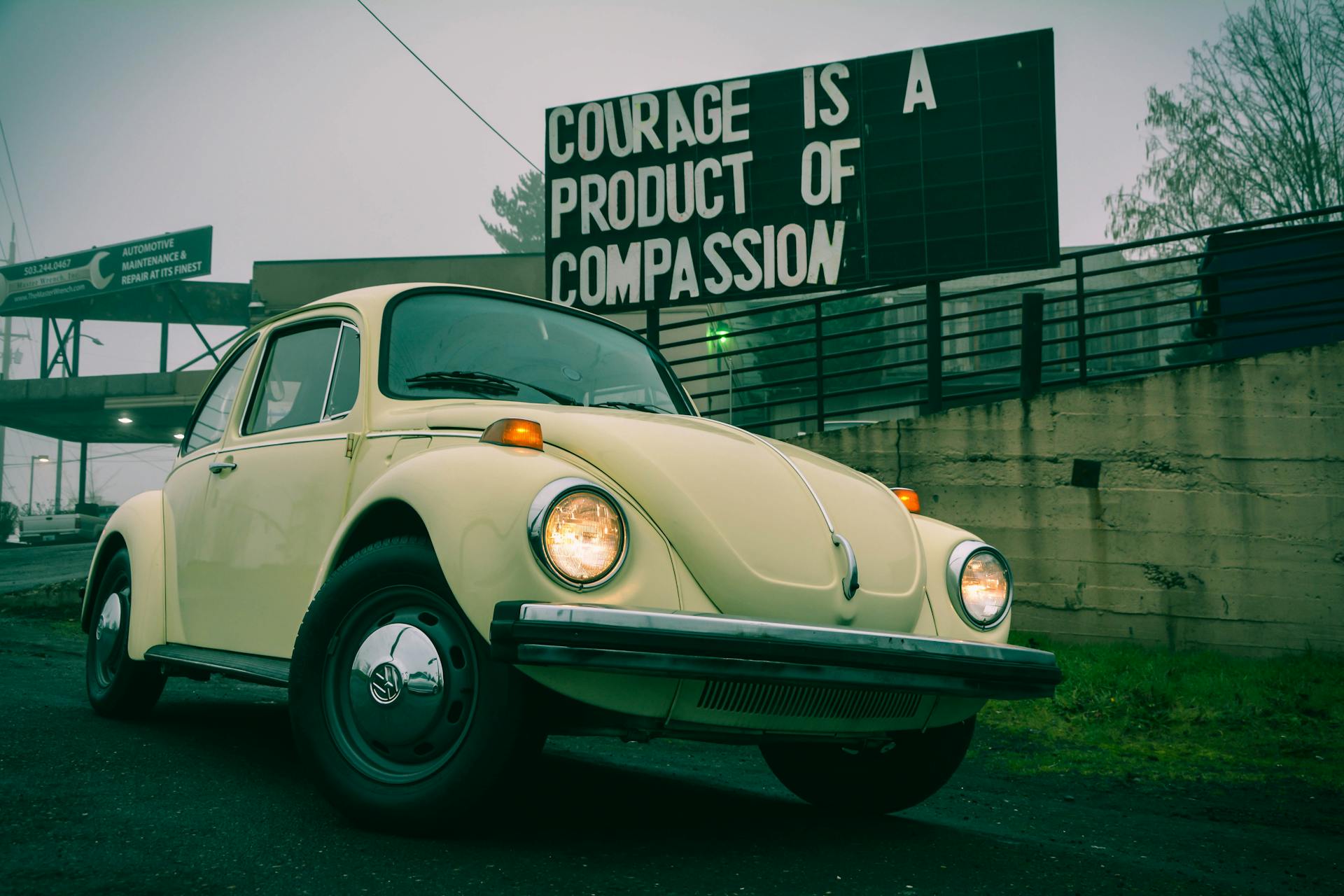
If you've recently purchased a new vehicle, you're probably wondering if your auto insurance covers the gap in vehicle purchase. Some auto insurance policies do cover the gap, but it depends on the type of policy you have.
Typically, gap insurance is an add-on to your auto insurance policy that covers the difference between the actual cash value of your vehicle and the amount you still owe on your loan.
In most cases, gap insurance is not included in the standard auto insurance policy, so you'll need to purchase it separately or check if it's already included in your policy.
On a similar theme: Life Insurance That Covers an Insured's Whole Life
What Auto Insurance Covers
Auto insurance can be a complex topic, but let's break it down. Most auto insurance policies cover damage to your vehicle caused by accidents, theft, vandalism, and natural disasters.
Liability coverage, which is usually mandatory, pays for damages to other people's property and medical expenses if you're at fault in an accident. This typically includes bodily injury and property damage.
Additional reading: Does Car Insurance Cover Accidents on Private Property
Comprehensive coverage, on the other hand, covers damages not related to accidents, such as fire, flood, and animal collisions. This coverage is usually optional but can be a lifesaver in unexpected situations.
Collision coverage pays for repairs to your vehicle if you're involved in an accident, regardless of who's at fault. This coverage is also optional but can be a good investment if you drive a newer or more expensive vehicle.
How It Works?
Auto insurance gap coverage is designed to bridge the financial gap between the actual cash value of a vehicle and the outstanding loan or lease balance.
The actual cash value of a vehicle is determined by its market value, which can be lower than the purchase price due to depreciation.
Gap coverage typically kicks in when a vehicle is declared a total loss, meaning it's been damaged beyond repair and is no longer drivable.
If you're financing a vehicle, your lender may require you to purchase gap coverage to protect their investment.
Gap coverage can be purchased separately or as part of a comprehensive insurance policy.
It's essential to review your insurance policy and understand what's covered and what's not, as not all policies include gap coverage.
Auto Insurance Requirements
Auto insurance is mandatory in most states, with minimum requirements varying from state to state. You'll need to check your state's specific laws to determine the required coverage levels.
In most cases, auto insurance is required by law to have liability coverage, which pays for damages to others in an accident. This typically includes bodily injury liability and property damage liability.
The minimum liability limits vary by state, but they often include a minimum of $25,000 in bodily injury liability per person and $50,000 per accident.
Consider reading: Will My Bodily Injury Cover Underinsured Motorist Coverage
What's Required
If you're financing a car, you'll want to consider the requirements for gap insurance. Lenders may require gap coverage on leased vehicles.
To determine if you need gap insurance, it's essential to understand your financing terms. If your down payment is less than 20% of the sale price, you could end up with negative equity on the vehicle as soon as you drive away from the dealership.
If you have a longer financing term for your vehicle, you're more likely to owe more on the vehicle than it's worth. This is especially true if you're buying a car with a higher depreciation rate.
Here are some scenarios where you may need gap insurance:
- Leasing a car: Gap insurance is often required by lenders.
- Financing a car with a lower down payment: This increases your chances of owing more on the vehicle than it's worth.
- Longer financing terms: The longer you finance your car, the higher your chance of owing more than its value.
- High depreciation rate: Certain cars depreciate faster than others, so it's essential to consider this when deciding on gap insurance.
- Loan rollover: If you owe more on your loan than your car is worth at renewal, gap insurance can help protect you from negative equity.
Is Mandatory?
Gap insurance isn't mandatory, but it might be required by your financing agreement.
Carefully review the terms of your car loan to see if you need gap insurance. It's a good idea to do this to avoid any potential issues down the line.
Purchasing and Cost
You can purchase gap insurance from a variety of sources, including your auto insurer, lender, or dealership. However, buying gap insurance through your auto insurer can be a smarter option to avoid paying interest on your gap coverage due to bundled lease/loan payments.
The cost for gap coverage varies by insurer, but you can get an exact price for loan/lease payoff coverage from Progressive by getting a car insurance quote online. This will give you an answer in minutes.
Explore further: Auto Insurer
The cost of gap insurance can vary depending on several factors, including the current actual cash value of your car, your age, the state you live in, and your previous car insurance claims. Bundling gap insurance with your existing policy will usually save you money, with insurers charging an average of $20-$40 per year.
Here's a breakdown of the average cost of gap insurance:
Keep in mind that once you "close the gap" by owing less on your car than its actual cash value, you will no longer need gap insurance.
How Much Is?
Gap insurance can cost hundreds of dollars a year if you buy it from the dealership.
The cost of gap insurance can vary, but it's usually quite inexpensive, typically increasing your premium by around $40 to $60 per year if you add it to a car insurance policy that already includes collision and comprehensive insurance.
You can get an exact price for loan/lease payoff coverage, which is similar to gap coverage, from Progressive in just minutes by getting a car insurance quote online.
How Long Last?

Gap insurance typically lasts as long as your policy is active, but you won't need it for the entire length of the loan.
Once you add gap insurance, it applies for the duration of your policy.
You can drop the insurance once you owe less than what the car is worth.
When Do I Need?
When Do I Need Gap Insurance?
You need gap insurance if you owe more on your car loan than the car is worth. This is because gap insurance can cover the difference between the loan balance and the vehicle's book value if it's totaled.
Some car loans require gap insurance, so it's essential to check your loan agreement. If your lease requires gap insurance, you should also consider purchasing it.
Drivers who own their car outright or owe less on their car than its current actual cash value don't need gap insurance. However, they still need car insurance coverage to protect themselves and their vehicle.
Readers also liked: Collision Loan Coverage
Gap insurance might be a good choice if you didn't make much of a down payment when you financed your car or if you plan to drive it in a way that might decrease its resale value quickly.
Here are some situations that may call for gap insurance:
- Owing more on your car loan than your vehicle's value
- If your car is totaled and standard coverage pays less than your loan balance
The cost of gap insurance is usually inexpensive, typically increasing your premium by around $40 to $60 per year if added to a car insurance policy.
How to Purchase
You can purchase gap insurance in a few different ways. Buying gap insurance through your auto insurer is a smarter option than buying it from a dealer, as it can help you avoid paying interest on your gap coverage.
You can get an exact price for loan/lease payoff coverage, which is similar to gap coverage, from Progressive by getting a car insurance quote online.
Most major car insurance companies offer gap insurance, but not all of them do. You can also get gap coverage from your dealership or auto lender when you purchase the vehicle.

However, buying gap insurance from a dealership or lender can cost you more, as the cost is added to your auto loan payments with interest.
Here are some options to consider:
How Much Cost?
The cost of gap insurance can vary, but it's generally inexpensive. You can expect to pay around $20-$40 per year if you bundle it with your existing policy. However, if you purchase it independently, the cost can range from $200-$300.
The cost of gap insurance depends on several factors, including the actual cash value of your car, your age, the state you live in, and your previous car insurance claims. If you buy gap insurance from the dealership, it can cost hundreds of dollars a year.
If you add gap coverage to a car insurance policy that already includes collision and comprehensive insurance, it typically increases your premium by around $40 to $60 per year. This is a relatively small price to pay for the added protection.
Here are some estimated costs to consider:
Frequently Asked Questions
Does my car insurance have gap coverage?
Check your car insurance policy documents for a list of coverages, including optional ones like collision and comprehensive coverage, to see if gap coverage is included. If it's not listed, you may not have gap coverage, but it's always best to verify with your insurance provider.
Why didn't Gap pay off my car?
Gap insurance may not pay out if the policyholder is in default on their car loan or lease agreement, such as missing payments or lacking proper coverage. Review your loan or lease agreement to see if you're in compliance.
How does a gap work when a car is totaled?
Gap insurance pays the difference between your loan amount and your vehicle's actual value if it's totaled, covering the gap between the two
What exactly does gap insurance cover?
Gap insurance covers the difference between the car's financed amount and its actual cash value in the event of a total loss, helping to avoid financial gaps. This coverage can help you avoid owing money on a car that's no longer drivable.
What is the most gap insurance will pay?
Gap insurance typically pays the remaining loan or lease balance after your vehicle's actual cash value is settled, up to the full amount owed. This amount depends on the loan or lease balance and your car's value.
Sources
- https://www.progressive.com/answers/gap-insurance/
- https://www.nationwide.com/lc/resources/auto-insurance/articles/what-is-gap-insurance
- https://www.investopedia.com/terms/g/gapinsurance.asp
- https://www.marketwatch.com/guides/insurance-services/gap-insurance/
- https://www.geico.com/auto-insurance/gap-insurance-coverage/
Featured Images: pexels.com


